Several years ago I designed a practice based on an idea I got from Maxwell’s omelet workout—the difference being, where the omelet served up a bit of everything, my Deep 6 focused on only the six core lifts in the SFG Level I curriculum. My purpose was threefold:
- I wanted to get conditioning benefits without messing with high reps or light weights.
- I wanted a deep skill practice on all six basics.
- I wanted to stress-proof my get-ups.
The Deep 6 delivers all of this and more. But as I worked with students, I quickly realized the ones who were strong enough to finish the Deep 6 did not really need the Deep 6, and the ones who could benefit from it failed to complete. The short answer to this problem was, be strong first. Easily said, a little more complex in reality.
So what follows is a practice/plan to take your group class on a guided tour of the Deep 6, ensuring they have and keep stellar technique, as well as stay together as a unit. Before I reveal the guided session plan, let us have a look at the original plan in case you are not familiar with it. Remember this is for someone who has a firm grip, pun intended, on the Basic 6. Be warned: it looks easy on paper, but it is a whole other beast in reality.
The Original Deep 6 Plan
All lifts are done right-handed without setting the bell down between moves.
- 5 Swings
- 5 Snatches
- 5 Cleans and Presses
- 5 Front Squats
- 1 Reverse Get-up
- Now switch hands and repeat the sequence on the left.
Try for 5 rounds.
Note on the get-up: It’s really a “get-down” ala Shawn Cairnes. After the last squat, press the bell to lockout and do the down phase of the get-up until you are at the firing range position and then get back up.
- Beginner: Rest 30 seconds after every hand switch, rest 1 minute between rounds.
- Intermediate: Rest after you have competed both right and left. 30 seconds to 1 minute.
- Advanced Level: No rest, go through all 5 cycles.
Suggested weight: 24kg for men and 12kg for women. For people with masochistic tendencies use a 32kg or 16kg respectively.
Now that you have seen the original Deep 6, let’s look at a plan to progressively implement it into a group setting.
Step 1: Weight Selection
Let’s start with weight selection. Have your students grab a kettlebell they can strictly press for about 8 reps. We want this to be heavy, but they need to get 5 presses in a row with that weight. I use the press to determine the kettlebell selection because if they can press it five times, then they should be able to do the other lifts no problem. If not, then they are not ready for this practice.
One more word about weight selection, choose your “sport weight” not your “game weight.” What does that mean? A humorist once said if you can do an activity while chewing tobacco, it is a game not a sport. So, choose a sport weight!
Step 2: Formation
Have the students form a big circle. You are standing in the center of the circle. Make certain the students have plenty of room between each other. They will need to be able to have enough room to do a get-up safely.
Step 3: The Practice
Round 1:
- Do 5 one-arm swings with your right arm. Put the bell down and do fast and loose until everyone finishes.
- Do 5 snatches with your right arm. Put the bell down and do fast and loose until everyone finishes.
- Do 5 cleans and presses with your right arm. Put the bell down and do fast and loose until everyone finishes.
- Clean the bell with your right arm, keep the bell in the rack, and do 5 front squats. Put the bell down and do fast and loose until everyone finishes.
- Press or push press the bell to the overhead lockout position and perform one reverse get-up. Put the bell down and do fast and loose until everyone finishes.
- Have the class walk around the outside of the circle twice for recovery.
- Repeat the above sequence on the left side.
- Have the class walk another two laps around the circle for recovery.
Round 1 is very easy. It has plenty of recovery built in. It gives you a chance to make adjustments in techniques or weight of the bell. It also gives the students a chance to learn the sequence of move. It is a great start of the Deep 6 Tour.
Round 2:
- Do 5 one-arm swings on the right and without setting the bell down immediately do 5 snatches on the right. Set the bell down and perform fast and loose shakeouts until everyone is done.
- Do 5 cleans and presses on the right. Leave the bell in the rack when finished and immediately do 5 front squats. Put the bell down and perform fast and loose shakeouts until everyone is finished.
- Get the bell overhead in any safe manner and do one reverse get-up. Set the bell down and do fast and loose until everyone is finished.
- Jog two laps slowly around the outside of the circle doing shakeouts as you go for recovery.
- Repeat the above sequence on your left side.
Round 2 takes up the intensity a bit by pairing the exercises and cutting down the rest period. It is a good intermediate step.
Round 3:
- Do the whole Deep 6 on the right side without putting the bell down. After you finish the reverse get-up, set the bell down and do fast and loose until everyone is done.
- Jog one lap around the outside of the circle for recovery.
- Repeat on the left.
Round 3 is a good stopping point for most students. It is hard, and they may need to spend some quality time at this level, which is fine.
Round 4:
- Do the full Deep 6 on your right side, then swing switch and do the full Deep 6 on your left side. Set the bell down and do shakeouts until the group finishes.
- Jog around the outside of the circle for three laps, progressively getting slower with each lap until you are finally just walking and things have simmered down to normal.
It will take about 45 minutes or so to get a large group through the whole lesson plan. It progressively gets more challenging with each round and, of course, you can always stop at whatever round you deem appropriate.
This is tried and true and I hope your classes will enjoy it. Drop me a line at info@extremetraining.net or ping me on the StrongFirst forum and let me know how it goes.
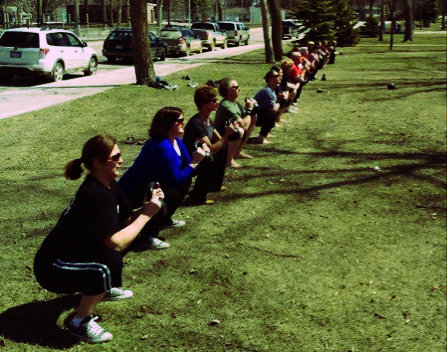
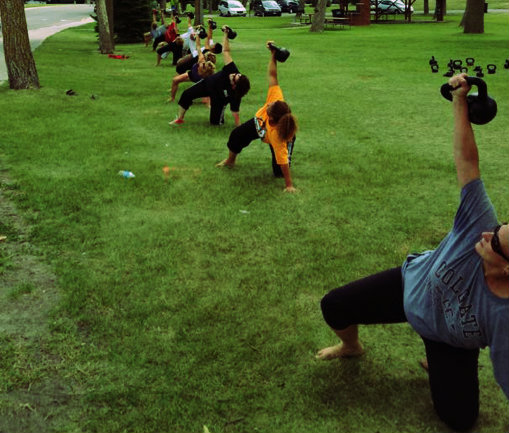
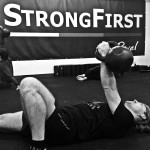
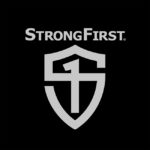
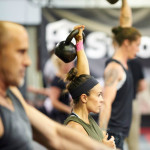
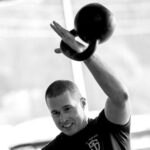

Thank you for posting this Jon. I will be incorporating this into my routine to stress-proof my get ups.
Awesome article, I am looking forward to trying this out with not only the Deep 6 but other workouts as well (the formation and everything). 🙂 One question though, what does it mean when you say “do fast and loose” ?
Fantastic post, Jon!
Love the Deep 6. Thanks Jon, I’m going to start this with my small groups next week. Thank you for putting this out there.
I just finished this workout, well partially. I trimmed it to the Deep 5 leaving out the TGUs for reasons I won’t go into here, but still, I haven’t been this destroyed in years. I’ve been training with kettlebells for 10 years, but I’m more of a slacker, not hard-style. I’ve also done traditional lifting and Crossfit. Not since the original Fight Gone Bad have I felt like this (CFers will know what I mean). Done properly with. hard-style, this is a “blast” in every sense of the word!
Day one of this with my small group and it was a butt kicker. Nice job!
Thanks for posting this. This would make great squad PT for a motivated Marine unit.
great one jon